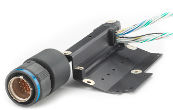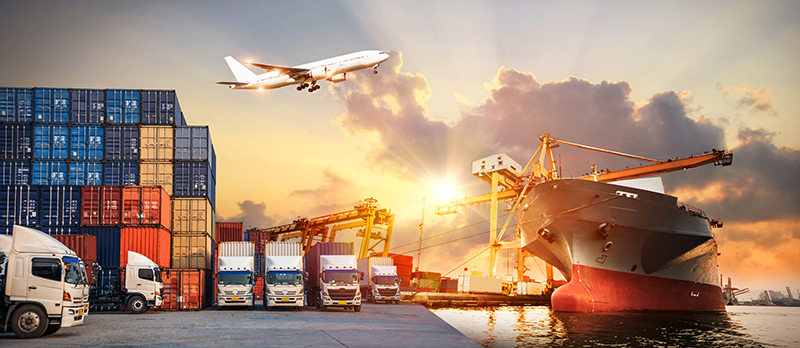Imagine you’ve just been called upon by a local sales representative for an automation company. You may have known that salesperson for years and they might even be working from their home base right down the street from where you live. They are great at helping you find the solutions you need with the variety of products they offer. But once you send them a cable assembly order, where is it actually made? For many of these companies, your cable assemblies are made halfway around the globe. Due to the variety of reasons causing global uncertainty, that automation company might follow in the footsteps of several multinational companies like Ford by exploring options to near-shore or even re-shore fabrication back to the United States.
First, let’s be clear about what “Near-Shoring” might mean.
Rosemary Coates, executive director of the Reshoring Institute said the following during an interview published November 4th, 2022 by Transportation Topics, “China is no longer the lowest cost sourcing option for U.S. manufacturers, Coates said.” The article continues to explain, “ One alternative she has seen is companies adopting a “China plus one or two” strategy. In this approach, companies are moving some production and sourcing from China to other Asian countries, such as Vietnam, Malaysia, or Thailand, at up to a third of the costs. A variation on that theme involves companies relocating manufacturing from Asia and sourcing it along the U.S.-Mexico border. Supply Chain Woes Accelerate Reshoring, Nearshoring Trend | Transport Topics (ttnews.com).”
According to the Research on Investment Group, not so long ago in 2020 the top 10 countries most desirable for “near-shoring” alternatives to China in order of ranking were Vietnam, Ukraine, Indonesia, Serbia, Czech Republic, Taiwan, Thailand, Sri Lanka, Russia, and Hungary. Top 15 Countries for Nearshoring – Research On Investment. Looking at this list, most people keeping track of current events would conclude that each of these pre-2022 “near-shoring” alternatives to China comes with its own cautionary tales ranging from political unrest, rationing of utilities and black-outs, weather-related disasters, governmental bankruptcies, military occupation or concerns of an impending invasion. Having a “re-shored” domestic source greatly reduces the likelihood of a “Force Majeure” contractual clause impacting delivery.
Still Offshoring?
If you are one of those companies considering using a foreign vendor for contract manufacturing services or purchasing your vital communications protocol assemblies like the M series that MJM Industries manufactures here in the USA, consider the fact that there are many hidden costs to the actual “landed cost”, the cost of the product once it hits US soil.
Your vendor will pass along all expenses related to importing your assembly. Those expenses could include tariffs or even import duty calculations based upon the cost of transportation included with the declared customs value price per unit. In other words, paying duty on the shipping price included as part of the value of the shipment.
Going the cheap route by maritime transport? The average transit time to ship a container between the United States and China is between 2-6 weeks. During normal conditions, 30% of shipments are delayed in or between ports. Besides the obvious loss of sales caused by unanticipated lead time woes, any associated demurrage fines during delays in port or customs clearance will certainly be passed along to you, the customer. The in-country transportation costs from port of entry to domestic distribution center and inventory holding costs are all also factored into your final price.
MJM Industries’ customers gave great feedback about why they also have a local vendor.
The post-pandemic MJM Industries sales team has enjoyed re-engaging customers at trade shows and renewing on-site customer surveys.During our conversations with a wide variety of OEMs of different sizes and industries, we received similar feedback from all of them. Some OEMs go through thousands of retail-style assemblies that are easily purchased through their automation company supplier. However, they all seem to agree that cost and lead time become major factors when their needs deviate from the cookie-cutter, high-volume M-series assembly to a more customized application particular to their application. During these conversations, they are usually pleased to find out that not only can MJM Industries provide that solution at a reasonable price, but with considerably less lead time.
The most sustainable way to grow manufacturing is not to offshore, but to homeshore.
Sure, businesses operate to make money, but there are other factors that must drive the decisions made that affect our entire society. Consider the environmental impact of added packaging for products made overseas or the fuel costs and carbon footprint of shipping components around the world. Let’s not ignore the importance of growing the manufacturing sector here in the US by supporting manufacturing jobs and creating a more robust skilled labor force.
Real advantages vs. perceived gains.
We believe the advantages of choosing a US-based contract manufacturer, and specifically, MJM Industries for your custom overmolded assemblies far outweigh any perceived gains by offshoring. Research the feasibility of diversifying your supply chain to include a domestic source as a risk-mitigating strategy. For flexible and responsive services, consider MJM Industries for your future contract manufacturing requirements for cable assemblies, wire harnesses, and overmolded products to save time and money.


